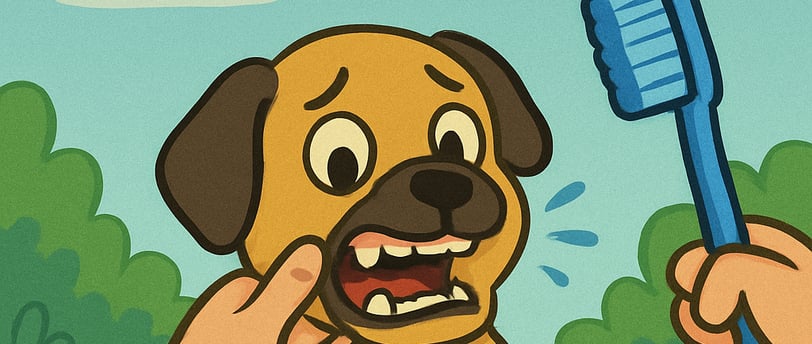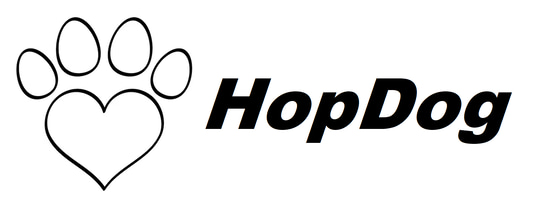Dog Dental Health: 7 Signs Your Dog Needs a Vet Visit
Maintaining your dog’s dental health is essential for their overall well-being. Poor dental care can lead to pain, difficulty eating, and severe health complications, including infections that affect the heart, liver, and kidneys. Recognizing early warning signs and implementing preventive measures can significantly improve your dog’s quality of life.
ARTICLES


Maintaining your dog’s dental health is essential for their overall well-being. Poor dental care can lead to pain, difficulty eating, and severe health complications, including infections that affect the heart, liver, and kidneys. Recognizing early warning signs and implementing preventive measures can significantly improve your dog’s quality of life. This guide details seven critical signs that your dog needs a vet visit and actionable steps to prevent dental issues.
Why Dog Dental Health Is Crucial
Dental problems are among the most common health issues in dogs, with 80-90% of dogs over three years old showing signs of periodontal disease. Untreated dental disease causes chronic pain, tooth loss, and systemic infections that can shorten your dog’s lifespan. Early detection and prevention are key to avoiding costly treatments and ensuring a happy, healthy pet.
7 Signs Your Dog Needs a Veterinary Dental Check-Up
Stay vigilant for these telltale signs that your dog requires professional dental care:
1. Persistent Bad Breath
Description: A strong, unpleasant odor from your dog’s mouth that doesn’t improve with basic cleaning.
Cause: Often the first indicator of bacterial buildup, gingivitis, or advanced periodontal disease.
Action: If “dog breath” persists beyond a day or two, schedule a vet visit.
2. Red, Swollen, or Bleeding Gums
Description: Gums that appear inflamed, bright red, or bleed when touched or during eating.
Cause: Early-stage gingivitis or progressing periodontal disease due to plaque irritation.
Action: Seek vet care if redness or bleeding lasts more than a few days.
3. Plaque and Tartar Buildup
Description: Visible yellow or brown deposits on teeth, especially near the gum line.
Cause: Plaque hardens into tartar, harboring bacteria that lead to gum inflammation and infection.
Action: Regular home cleaning can help, but heavy buildup needs professional scaling.
4. Discolored, Misaligned, or Broken Teeth
Description: Teeth that look yellow, brown, or grey, are cracked, or sit unevenly in the mouth.
Cause: Decay, trauma, or genetic misalignment trapping food and bacteria.
Action: A vet can assess damage and recommend extraction or treatment.
5. Reluctance or Aggression When Touching the Mouth
Description: Your dog pulls away, growls, or shows discomfort when you approach their mouth.
Cause: Pain from cavities, abscesses, or gum inflammation.
Action: Avoid forcing inspection—contact a vet to diagnose the issue safely.
6. Dropping Food or Reduced Appetite
Description: Difficulty eating, dropping kibble, chewing on one side, or refusing food.
Cause: Dental pain or loose teeth making eating uncomfortable.
Action: Monitor weight and consult a vet if appetite drops for more than 48 hours.
7. Visible Signs of Pain or Discomfort
Description: Pawing at the mouth, excessive drooling, or swelling around the jaw or face.
Cause: Advanced dental disease, abscesses, or oral infections requiring urgent care.
Action: Seek immediate veterinary attention for swelling or severe drooling.
Why Do Dogs Get Dental Problems?
Dental disease affects most dogs due to several factors:
Plaque and Tartar: Bacteria in the mouth form plaque, which hardens into tartar within 24-48 hours if not removed, irritating gums and causing infection.
Diet: Soft, sticky foods cling to teeth, promoting plaque, while dry kibble or dental diets can help scrape it away.
Breed and Genetics: Small breeds (e.g., Chihuahuas, Yorkshire Terriers) and those with crowded teeth are more susceptible due to limited space for proper cleaning.
Age: Older dogs accumulate more plaque over time, increasing disease risk.
Lack of Care: Infrequent brushing or checkups allows problems to escalate unnoticed.
How to Prevent Dental Problems in Dogs
Preventing dental issues is more effective and affordable than treating advanced disease. Implement these strategies for a healthier mouth:
1. Brush Your Dog’s Teeth Regularly
How: Use a dog-specific toothbrush and toothpaste (never human toothpaste) 2-3 times a week, ideally daily.
Benefits: Removes plaque before it hardens into tartar.
Tip: Start slowly, letting your dog get used to the process with treats and praise.
2. Provide Dental Chews and Toys
How: Offer vet-approved dental chews or textured toys designed to clean teeth.
Benefits: Mechanical action reduces plaque and massages gums.
Tip: Choose size-appropriate options to avoid choking hazards.
3. Feed a Dental-Healthy Diet
How: Opt for dry kibble or dental-formulated diets that promote chewing and plaque removal.
Benefits: Reduces food residue and bacterial growth.
Tip: Avoid sugary treats or table scraps that stick to teeth.
4. Schedule Regular Veterinary Check-Ups
How: Arrange annual dental exams and professional cleanings under anesthesia if needed.
Benefits: Early detection prevents progression to severe disease.
Tip: Ask your vet about a dental health plan for routine care.
5. Watch for Warning Signs Daily
How: Inspect your dog’s mouth weekly for redness, buildup, or changes in behavior.
Benefits: Catches issues before they worsen.
Tip: Use a flashlight and treat to make it a positive experience.
6. Offer Dental Water Additives or Rinses
How: Add vet-recommended solutions to drinking water to reduce bacteria.
Benefits: Provides an extra layer of protection between brushings.
Tip: Follow dosage instructions to avoid overusing.
7. Encourage Chewing on Safe Items
How: Provide rawhide-free chews or natural bones under supervision.
Benefits: Stimulates saliva production to naturally clean teeth.
Tip: Avoid hard bones that can crack teeth.
When to See the Vet
If you notice any of the seven warning signs—especially persistent bad breath, bleeding gums, or visible pain—don’t delay. Schedule a veterinary visit promptly. Early intervention can prevent tooth loss, alleviate pain, and stop infections from spreading to vital organs. For routine care, align with your dog’s annual check-up, but act immediately for severe symptoms like swelling or refusal to eat.
Troubleshooting Common Dental Care Challenges
Resistance to Brushing: Use finger brushes or flavored toothpaste and practice short sessions.
Tartar Buildup Despite Care: Increase frequency of brushing or consult a vet for a cleaning.
No Improvement: Persistent signs after home care need professional evaluation.
Frequently Asked Questions (FAQs)
Q: How often should I brush my dog’s teeth?
A: Aim for daily, but 2-3 times a week is a good minimum.
Q: Can I use human toothpaste for my dog?
A: No, it contains ingredients like xylitol that are toxic to dogs—use pet-specific products.
Q: What if my dog hates dental chews?
A: Try different textures or consult your vet for alternatives like water additives.
Q: How do I know if my dog’s dental issue is serious?
A: Swelling, excessive drooling, or appetite loss are urgent signs—see a vet immediately.
Conclusion
Prioritizing your dog’s dental health is a vital part of pet ownership that prevents pain and serious complications. By recognizing the seven key signs—bad breath, gum issues, plaque, tooth damage, mouth sensitivity, eating difficulties, and pain—and taking proactive steps like regular brushing and vet check-ups, you can ensure a healthier mouth. Start today with a quick mouth inspection or a brushing session, and partner with your vet for ongoing care as of 03:59 PM EEST on Thursday, June 19, 2025!
